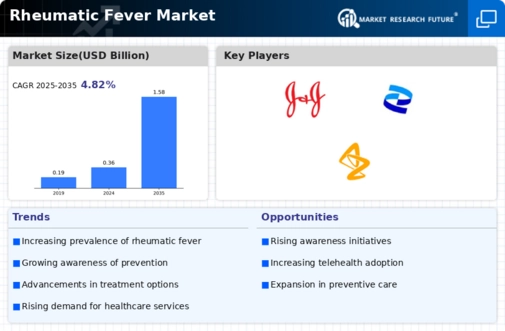Market Share
Rheumatic Fever Market Share Analysis
Within the broader healthcare landscape, the Rheumatic Fever market deploys several strategic measures to establish a competitive presence and effectively address unique challenges associated with this condition. One of these strategies involves therapeutic innovation, whereby companies invest heavily in research and development for advanced therapies against Rheumatic Fever. Such innovative solutions are geared towards improved effectiveness, reduced side effects and better patient outcomes that differentiate the industry players as well as capture significant shares of the Rheumatic fever treatment terrain.
When it comes to positioning their brands within the Rheumatic Fever market, pricing strategies play a central role. In view of importance attached to such treatments, different pricing models are often adopted by organizations operating in this sector. Competitive pricing is used by some entities so that many patients can have access to their treatments. However, others may adopt value-based pricing which emphasizes on specific benefits and advancements offered by their medicines for Rheumatic Fever thus justifying high prices. It is essential to strike a balance between affordability and perceived value in order to ensure availability of effective remedies for a wide range of clients while supporting profitability that can be maintained.
Collaborations and partnerships are fundamental when it comes to success in the Rheumatic Fever market. Companies form strategic alliances with research institutions, cardiologists and healthcare providers through which they share expertise, pool resources and navigate through complexities involved in developing treatments for Rheumatic Fever. Through collaboration efforts there is expedited research process, faster regulatory approvals processes during clinical trials and stronger supply chains hence enabling businesses to become major players in treating Rhematic Fever.
Marketing as well as branding strategies also play an important role in influencing how much market share one will have within treatment segment of Rheumatic Fever. For companies investing into holistic marketing campaigns meant at highlighting its advantages among medical workers; building awareness among health practitioners; creating trust about safety plus efficacy of products then educational initiatives like digital marketing strategies together participating in medical conferences help build strong brand presence eventually impacting on market share as well as position within the competitive landscape.
Geographical expansion is a strategic consideration for companies aiming to consolidate their market share in the Rheumatic Fever treatment segment. Identifying regions with a higher prevalence of Rheumatic Fever and tailoring strategies to meet specific regional healthcare needs are essential. Customizing products, distribution channels, and marketing approaches to align with diverse cultural and regulatory landscapes enables successful market penetration in different parts of the world, contributing to a more comprehensive global presence.
Continual investment in post-market surveillance, pharmacovigilance and patient support programs is critical for maintaining and expanding the market share in Rheumatic Fever treatment market. Proactive monitoring of treatment safety and effectiveness coupled with robust patient education and support initiatives enhance trust among healthcare professionals as well as patients. This ongoing commitment to safety and patient well-being has led to continued success in the market guaranteeing stakeholder responsibility by businesses engaged in treating rheumatic fever.






Leave a Comment